Panicle hydrangea Selection - variety description
Ornamental hydrangea Selection with conical inflorescences is one of the brightest panicle varieties. It is successfully cultivated throughout the European part of Russia, in western Siberia and the Far East. Consider its characteristics, the rules and timing of planting, as well as further care.
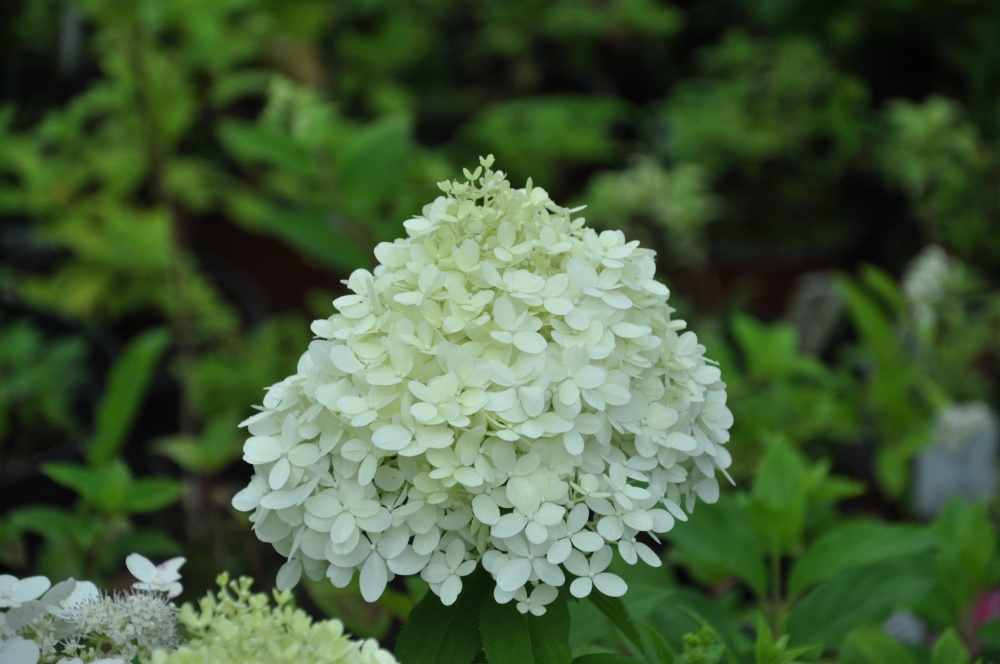
Hydrangea paniculata selection reviews
Description
The scientific name of the variety is hydrangea paniculata selection.
Hydrangea blooms in July and fades in mid-October. You can distinguish this shrub from others by the following description:
- stems are strong, strong, thick, erect, from 2 to 3 m in height, with a circumference of 2-2.5 m;
- the color of the shoots is dark brown;
- leaves are green, slightly corrugated, oval or rounded with a sharp tip;
- inflorescences are dense, large, in the shape of a cone, consist of small snow-white flowers, which acquire a pinkish tint by the end of flowering;
Landing rules
With the proper placement of bushes on the site, you can get not only lush blooming, but also healthy plants with which you will not have a hassle.
The best time for planting is spring, when the soil warms up to 10-12 ° C and the above-zero temperature stabilizes.
Usually planted in mid to late April. In the south and in the temperate climatic zone, this can be done in the fall - in the first half of September. So the seedlings will have time to take root and prepare for the upcoming wintering.
Site selection and preparation
Hydrangea Selection loves light, so it should be planted in an area where the sun shines in the morning and evening. Shading is required at lunchtime so that leaves and inflorescences do not get burned.
The soil is acidic, so there is no need to deoxidize. It can be planted on sandy loam soil, after sprinkling with clay or on loam, adding sand or vermiculite at the rate of 20 kg per 1 m².
It is important that the site is calm and without stagnant water. The optimum depth of groundwater is 2 m.
The landing site is freed from garden debris, dug deeply, leveled.
Selection and preparation of a seedling
You can buy seedlings of this variety in one of the flower shops. They are usually sold in containers or in an earthen coma. So they do not have time to dry out until the moment they are transplanted to the site.
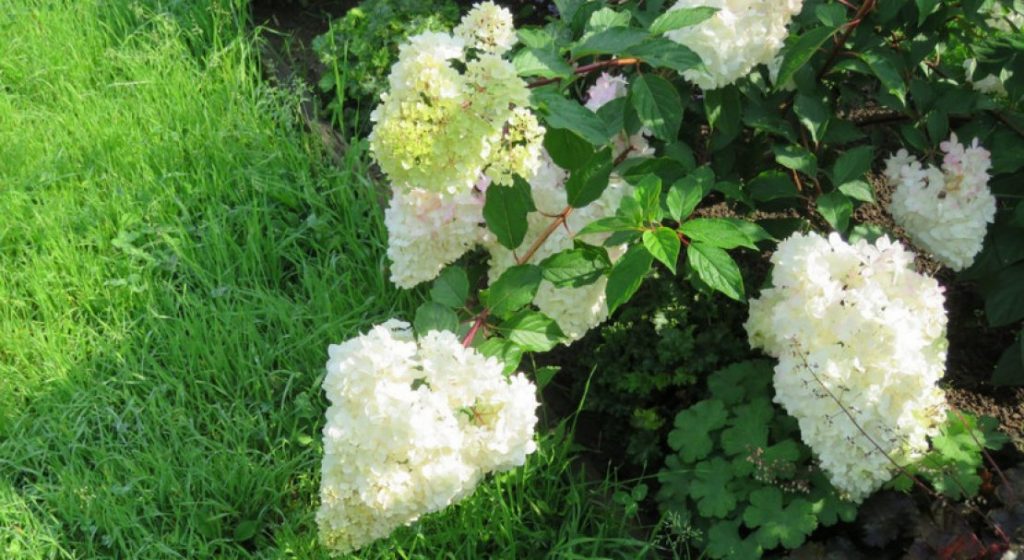
Hydrangea paniculata selection
Buy mature bushes with several stems, densely covered with leaves. They have a strong and well-branched root system, so they will safely survive planting in open ground.
In strong seedlings, the branches are flexible, without dry fragments, rot, cracks and growths. The leaves and buds are fresh, juicy, rich green.
Before planting, the bushes are removed from the container, dipped in a basin of water for two hours so that they are saturated with moisture, then cut to 2-3 cm in length. This will stimulate the rapid establishment and growth of new shoots.
Landing technique
Hydrangea paniculate selection is planted in pre-prepared pits. Their approximate parameters are 60x70 cm. A third of the volume is filled with drainage from pebbles, gravel, screenings and brick chips. Then fill with a mixture of dug earth, humus, sand, mixed in a ratio of 1: 1: 0.5. 100 g of superphosphate, 50 g of potassium sulfate and 500 g of wood ash are added.
The roots are lowered, all the voids are filled with the remaining composition, trampled, watered abundantly. Water consumption per seedling - 30 liters. After moistening, mulch with peat or compost to prevent rapid evaporation of moisture.
When planting, the root collar should be 3-4 cm above the soil surface. For group planting, a distance of 2.5 m is observed, in a row - 2 m.
Care requirements
Caring for a deciduous shrub is simple - it requires periodic moisture, pruning, feeding and loosening.
Watering
Hydrangea Selection does not tolerate drought well, so it needs to be watered regularly. In the first month after planting, the seedling is moistened every other day, which contributes to the rapid rooting and growth of green mass.
Further watering is carried out as the earth dries up to a depth of 4-5 cm, taking into account seasonal precipitation, because with an excess of moisture, the roots quickly rot.
Adult shrubs that have begun to bloom are watered according to the following scheme:
- in early spring;
- before and after flowering;
- in the fall after falling leaves.
Use warm and settled water to avoid hypothermia of the roots.
After each watering, the soil is loosened - this way it retains moisture and air permeability. They remove unnecessary vegetation, weed between the rows, add mulch from peat or humus to the near-trunk circle. This layer protects the soil from drying out and prevents the growth of weeds.
Top dressing
When laying nutrients during planting of seedlings, the first nutrition is carried out in the third year of life.
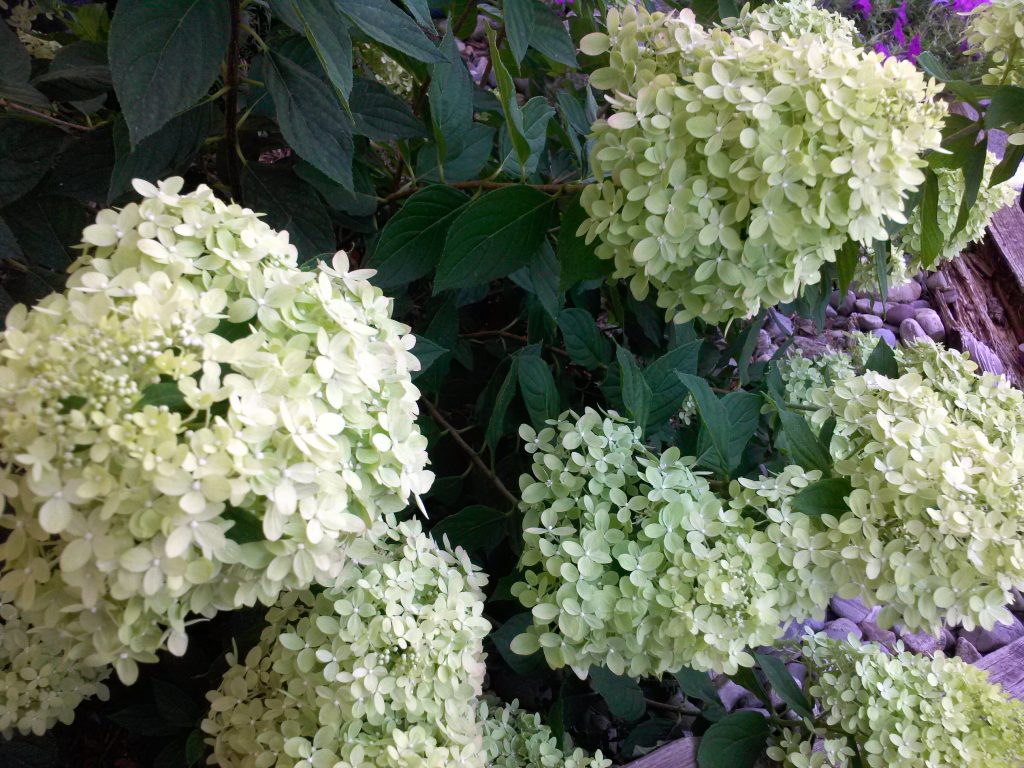
Hydrangea selection photo and description
The fertilization scheme is the same every year:
- At the beginning of the swelling of vegetative buds in the spring, they are fed with nitrogen-containing preparations - a solution of urea, nitrophoska or azofoska (15 g per bucket of water).
- Two weeks before flowering, fertilize with a liquid top dressing of superphosphate and potassium sulfate - 1 tbsp each. l. for 10 liters of water;
- In the fall, when the bush has faded, leaf compost or rotted manure is embedded in the soil.
After feeding, the bushes are watered abundantly - this helps them to quickly assimilate useful trace elements.
Pruning
It does not need shaping, but if you want to give it a compact crown, every spring and summer you can prune branches growing inward or at the wrong angle.
Together with this procedure, they carry out a sanitary haircut - they cut out all parts that are frozen, rotted, broken off or damaged by diseases.
Pruned with a sterile and well-sharpened instrument to avoid infection. After it is carried out, the crown is irrigated with a solution of copper sulfate.
Preparing for winter
The Selekshen panicle hydrangea is a frost-resistant crop, but at an early age (up to three years) requires shelter.
Insulate on the eve of the first frost:
- the near-trunk zone is treated with slaked lime to protect against the appearance of infections and parasites;
- then spud with a thick layer of peat, humus;
- twigs are tied into a bunch, gently bent to the ground, covered with fallen leaves, then covered with spruce branches or wrapped in burlap.
I rent a shelter in the spring, when the snow thaws and the heat of the street stabilizes.
Reproduction
There are several ways to get new seedlings from your own bush.
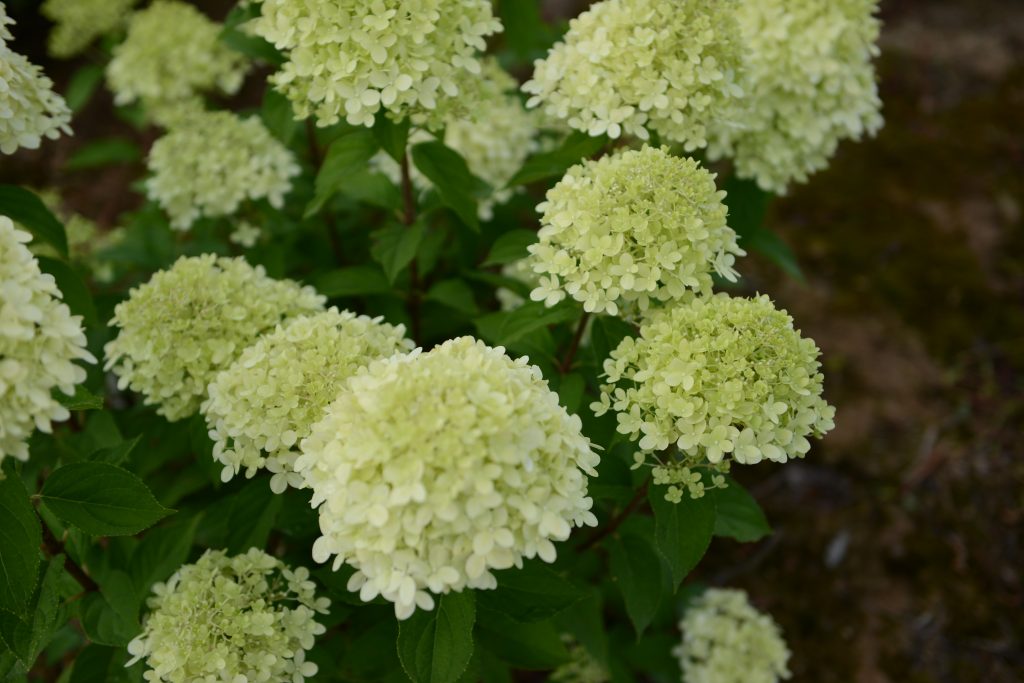
Hydrangea paniculata selection
Cuttings
In spring or summer, shoots of the current year with a length of 12-15 cm with leaves and buds are cut from an adult plant. They are immersed in Kornevin's solution for an hour. Then they are planted in a mixture of peat and sand to a depth of 3-4 cm, watered, covered with a transparent film.
Every day the seedlings are ventilated, irrigated as needed, and after the appearance of new leaves, they are opened.They grow for another month, after this time they are transplanted to the site.
Stem layering
In the fall, the most flexible woody twig is chosen on the bush, all the leaves are cut off on it. The shoot is lowered into a pre-dug groove in a horizontal position. Sprinkle with a fertile composition - a mixture of peat, sand and humus (1: 1: 1), watered.
On the eve of frost, sprinkle with a thick layer of sawdust or fallen leaves.
In the spring, when the snow thaws and the temperature reaches 6-7 ° C, the stem is dug out. They are cut off from the mother bush, divided into several parts with roots, and planted in the same way as purchased seedlings.
By dividing the root
This method of reproduction is resorted to when the shrub has stopped growing, blooming and needs to be rejuvenated.
The technique for breeding new seedlings is as follows:
- the hydrangea is watered, dug out in an hour;
- dipped in a container of water to wash off the remnants of the soil;
- after drying, the rhizome is cut into pieces with a shovel or knife - each should have at least one stem with buds and 2-3 roots;
- the places of the cuts are sprinkled with charcoal;
- delenki are seated separately in the garden.
Diseases and pests
This culture with high resistance to diseases and parasites weakens and gets sick only if the rules of care are violated:
- when affected by fungal infections (rust, powdery mildew, gray mold), fungicides are used - Bordeaux liquid, copper sulfate, Ridomil gold, Skor or Hom;
- if aphids, caterpillars, spider mites appear on the bush, it is necessary to treat with insecticides - Fitoverm, Aktellik or Aktara.
For prevention, it is worth buying healthy seedlings, avoiding thickening when planting, keeping the flower garden clean and providing the bushes with proper and timely care.
Application in landscape
Selection hydrangea is used as a tapeworm, in group plantings, combined with other ornamental vegetation in mixborders in flower beds.
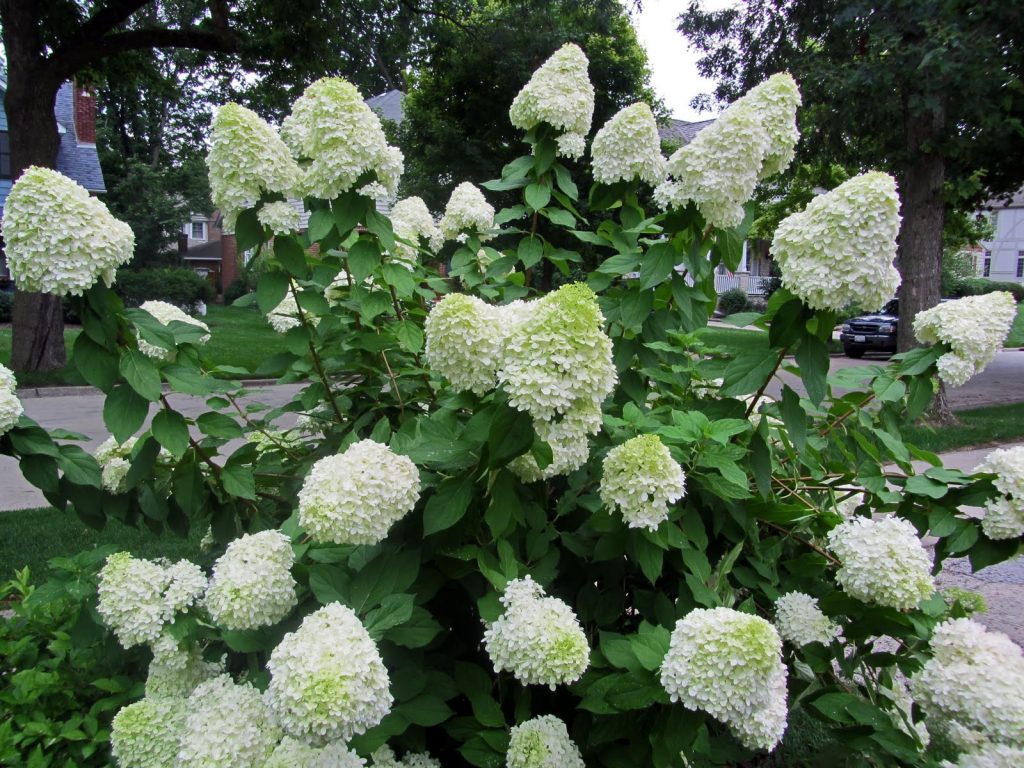
Hydrangea selection description
Combine with other varieties of hydrangeas, dwarf conifers, roses, rhododendrons. The bush looks beautiful near the gazebo, terraces, in the alleys, along the fences.
Testimonials
Many gardeners have come to love this perennial crop and give it a positive characteristic:
- not afraid of frost, does not need to be shaped and grows well on any type of soil, subject to the introduction of all nutrients;
- safely transfers the neighborhood of other vegetation, which makes it possible to create the most original and unique composition on the site;
- the ability to successfully reproduce by different methods, allows you to independently grow new specimens for landscaping the garden.

